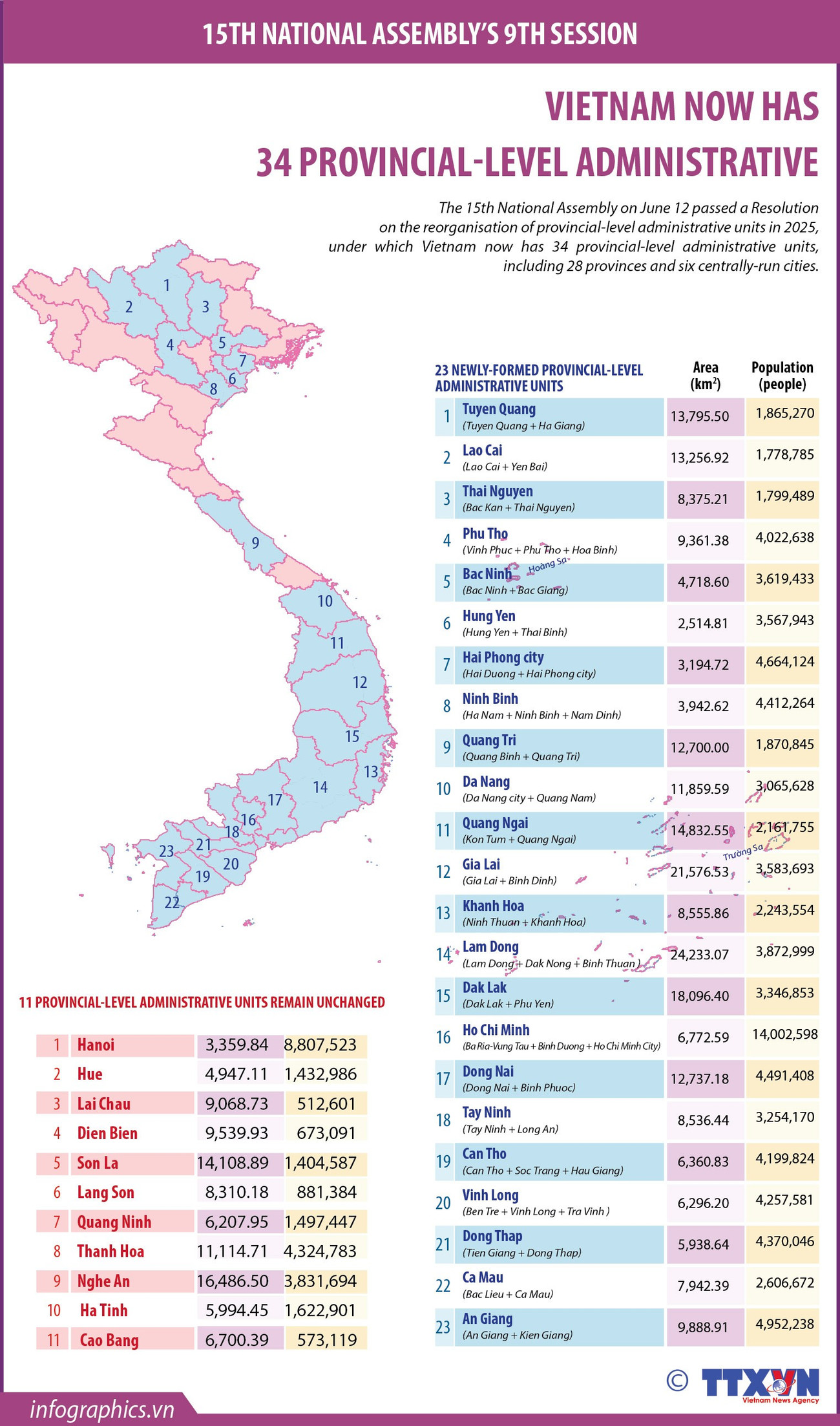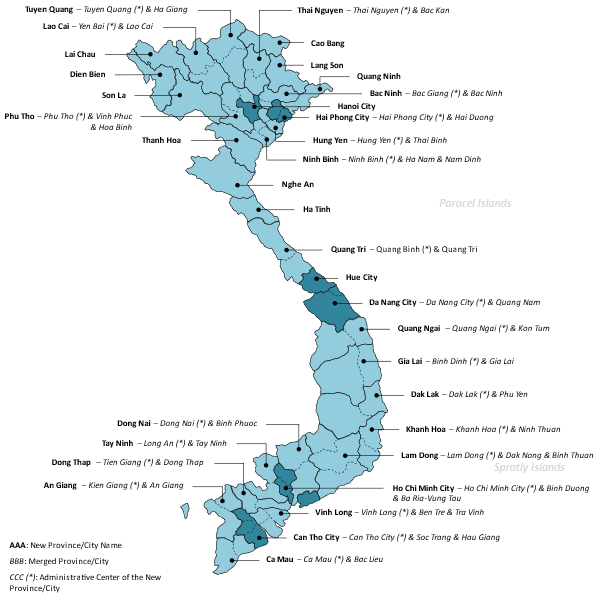Vietnam has embarked on one of the most significant administrative reforms in its modern history. For foreign teachers working across the country, understanding these changes is crucial as they reshape the geographical and administrative landscape of your workplace and daily life.
The Big Picture: From 63 to 34 Provinces

On June 12, 2025, Vietnam’s National Assembly officially approved a resolution to reduce the number of provincial-level administrative units from 63 to 34. This historic restructuring represents the largest administrative overhaul since Vietnam’s reunification, fundamentally changing how the country is organized and governed.
The new structure consists of 28 provinces and 6 centrally-run cities, with only 11 of the current 63 provinces and cities remaining unchanged. For context, imagine if the United States suddenly merged its 50 states into just 34 – that’s the scale of change Vietnam is implementing.
What’s Driving This Change?
The Vietnamese government has identified several key motivations behind this massive reorganization:
Administrative Efficiency: Reducing the number of administrative units is expected to lead to more efficient governance and decision-making processes, as well as lower administrative costs due to fewer government offices and personnel.
Streamlined Bureaucracy: The reform aims to eliminate redundant layers of administration that have historically slowed down processes for both citizens and businesses.
Economic Development: By creating larger, more economically viable provinces, the government hopes to enhance competitiveness and attract more investment.
The New Two-Tier Government Model
Perhaps the most significant change for daily life is the introduction of a new two-tier local government system. From July 1, 2025, district-level administrative units will be abolished, creating a simplified structure with only provincial and commune levels.
This means:
- Provincial Level: Will handle both policy implementation from the central government and direct management of communes
- Commune Level: Will have greater autonomy and direct authority over local issues
For foreign teachers, this could mean simpler administrative processes when dealing with work permits, residence registration, and other bureaucratic matters, as there will be fewer layers of government to navigate.

Timeline and Implementation
The restructuring is happening rapidly:
- June 12, 2025: National Assembly approval
- July 1, 2025: Newly formed local administrations begin operations
- August 30, 2025: Provincial mergers will be finalized, enabling newly merged provinces to start operations on September 1
- December 31, 2025: Full implementation completed
Practical Implications for Foreign Teachers
Administrative Changes
- Work permit and visa processes may temporarily experience delays during the transition period
- Address changes may be required on official documents
- Banking and insurance information may need updating
Educational System Impact
- School districts and educational management boundaries will change
- Some schools may find themselves under new provincial authorities
- Potential changes in curriculum standards as provinces merge their educational systems
Living and Working
- Postal addresses will change for many locations
- Transportation routes and infrastructure planning may be affected
- New economic opportunities may emerge in merged provinces
Tips for Foreign Teachers
- Check official documents: Always refer to the new province or city name on your contracts and visas.
- Update your address: Contact immigration, banks, and service providers to ensure they recognize the new administration.
- Stay informed: Expect revisions in how institutions are administered—attend school updates or check VTJ/Vietnam government sites.
- Plan flexibility into travel: Inter-provincial transport routes may soon reflect new administrative boundaries.
Looking Ahead
This reorganization represents Vietnam’s commitment to modernizing its governance structure for the digital age. The government aims to complete this comprehensive restructuring plan by the end of 2025, positioning Vietnam for sustainable growth and enhanced competitiveness in the global economy.
For foreign teachers, while the immediate months may bring some administrative inconveniences, the long-term benefits of a more efficient, streamlined system should make living and working in Vietnam easier and more straightforward.
The key is to stay informed, remain flexible, and view this historic change as an opportunity to witness Vietnam’s continued evolution into a modern, efficiently-governed nation. As the country consolidates its administrative structure, it’s also consolidating its position as an increasingly attractive destination for international educators and professionals.
For the most up-to-date information on how these changes affect your specific location, consult with your local authorities and school administration. This article is based on official government announcements and may be subject to updates as implementation proceeds.






